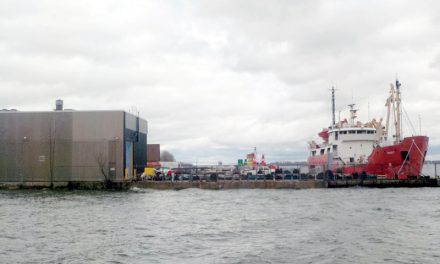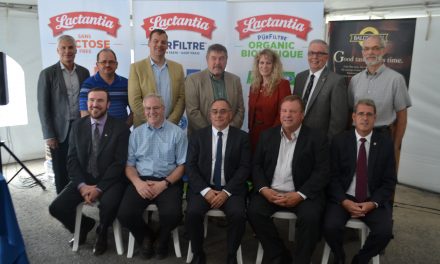by Tom Van Dusen
AgriNews Staff Writer
FINCH – Best management practices have been identified as the highest priority by the Forest Conservation Working Group as a means of getting a grip on depleting forests in South Nation Conservation’s 4,300 square-km jurisdiction.
Actions taken in this category are expected to have “the most positive impact” on the future of forest cover, says FCWG’s final report submitted recently to SNC. Specific actions recommended included defining and establishing marginal lands for forestry and environmental protection, while reserving prime farm land for that purpose.
As did its predecessor the Agricultural Forest Cover Committee, the FCWG report downplays the big-stick solution of municipal anti-tree cutting bylaws in favour of stronger communication, partnerships, education, outreach, and program enhancements.
Average regional forest cover across SNC’s jurisdiction now stands at 28 per cent and dropping, below the 30 per cent minimum seen as necessary to ensure a healthy natural environment. Main deforestation causes are agricultural, residential and industrial expansion, unsustainable tree harvesting, and alternative energy installations; between 2008 and 2014, some 13,148 acres of forests were lost.
Among areas requiring focus, the AFCC cited best management practices, education and promotion, and stakeholder engagement as priorities. And committee members made it clear they wanted to carry on the work and refine recommendations through representations from multiple stakeholders, giving rise to the FCWG and its subsequent work.
The AFCC recognized that agriculture is a significant land use and economic activity in the jurisdiction, about 60 per cent of which is farmed. In addition to growing crops and raising livestock, the industry supports important services such as market gardens, food hubs, equipment sales and service, feed businesses, and advisory services.
“The AFCC feels there are many actions that can help ensure a strong and viable future for forest cover in our area while recognizing that agriculture is a vital element of our community.”
The committee advocated training, online education and public advertising to help farmers adhere to best practices which would be used to evaluate the use of trees from “cradle to grave”, support woodlot assessment, inform on how to productively remove lumber, and provide minimum buffer distances.
One area that got slightly more attention with the FCWG the second time around was the notion that municipalities within the watershed “consider” – not necessarily implement – tree conservation bylaws which they’ve been reluctant to do out of fear of upsetting constituents.
In bundles of recommendations, the FCWG reinforced AFCC’s go-gently stance by promoting increased understanding and appreciation of biodiversity, encouraging municipalities to fund new forest cover initiatives, promoting available tax incentives for maintaining or adding forested properties, and even consideration of a zero per cent tax rate on forested land.
In addition, there should be new forestry education and outreach initiatives, a consolidated webpage with online resources and open source data, increased promotion of land and water recreational activities to heighten public awareness of ecological benefits, and an information package for new politicians to reinforce the value of forest conservation and need for dedicated funding.
As for agricultural best management practices, the FCWG called for emphasizing the benefits of protecting riparian areas and windbreaks, and enhancing SNC’s existing tree planting and Woodlot Advisory services.
According to the report, several recommendations are to be acted upon by SNC this fall, including a tree-planting subsidy for riparian buffer and windbreak plantings; evaluation of previous tree planting and buffer demonstration sites; signage and displays for 16 SNC member municipalities promoting forest stewardship resources for landowners; a bilingual community campaign extolling conservation and tree planting; and free tree days.












